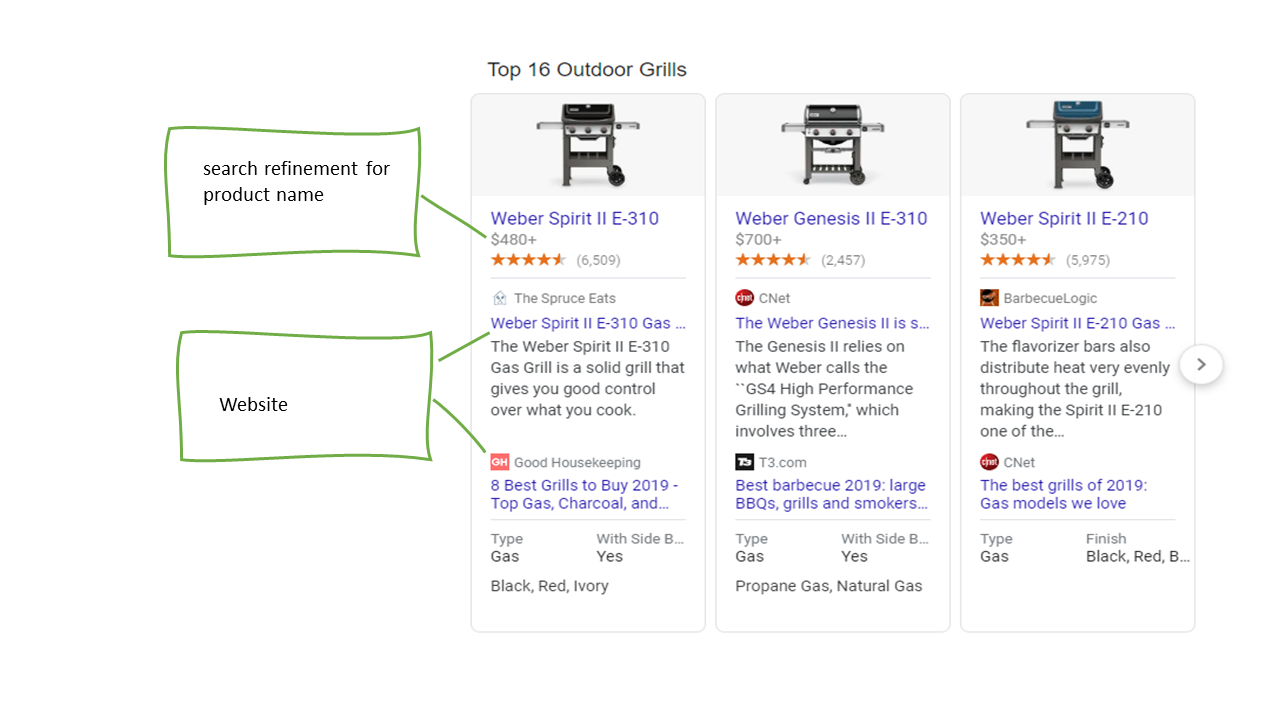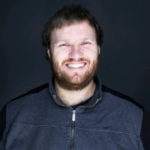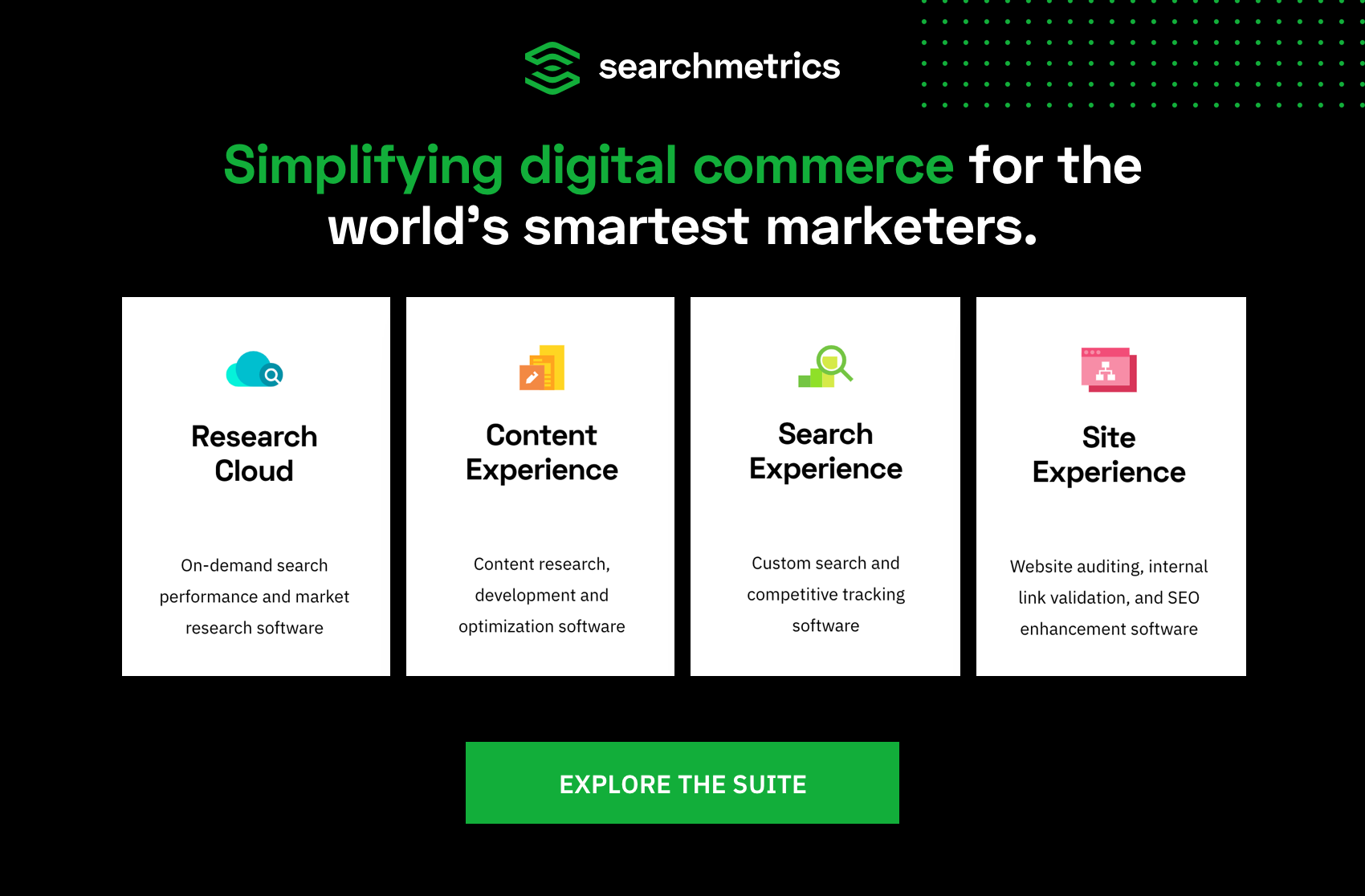Attention eCommerce SEOs! Google has made two announcements that you need to be aware of. Firstly, Google has rolled out its Popular Products Feature, emphasizing Google’s intent to turn transactional SERPs into a marketplace experience. Secondly, Google has opened up its Merchant Center to non-paying accounts. This means that you no longer have to run an AdWords campaign in order to manage a product feed display real-time data in the organic SERPs. Read on to find out what these developments mean for SEOs.
Did you know you can stay up-to-day with all the latest developments in SEO and Content Marketing by subscribing to our email newsletter?
What are Organic Product Features?
The term “Organic Product Features” is used to describe product-specific SERP Features that appear on the search results pages as unpaid, organic search results, above or amongst the traditional ten blue links.
Google first started experimenting with organic product carousels in 2019 on both desktop and mobile SERPs. The most visible was the Popular Products Carousel. Other variations were the so-called Best Products and Similar Products Carousels, which could be found for transactional product searches. All of these features were familiar to consumers from the browsing experience offered by online shops. In appearance, the various product carousels are not dissimilar from the Google Shopping carousel, as they display cards including images, product names, review scores and the number of reviews. The Organic Product Features can appear at different positions on the SERPs: directly below the paid search results, in amongst the ten blue links, or even integrated into the Knowledge Panel.
Depending on the type of product feature, the number of product cards displayed varies on mobile and desktop. At the time of writing, the Popular Products Feature includes two link targets:

Clicking on the product title within the card will open a new SERP for a more refined search query that targets the specific product name. This functionality has already been in use on SERPs for transactional keywords, where users are able to increase the specificity of their search with the help of so-called “Search Refinement Features”. These are used to narrow down searches to selected categories or brands:

Popular Products Feature rolls out
On the 15th of January 2020, Google announced the official roll-out of the Popular Product Feature, with the launch initially only impacting search results in the USA. According to the announcement, the feature appears on mobile devices for product queries in categories like clothing, shoes and accessories. What was once a simple carousel now includes filters for style, size, color etc., and also now contains more products. A click on a product opens a pop-up with a product comparison list that is strongly reminiscent of the Product Knowledge Panel from paid search. The list includes product prices and reviews from a range of online shops. Selecting one of the merchants from the shop list lets you navigate directly to their website. The reviews are immediately followed by another organic product feature that invites users to browse similar products.

In their announcement, Google states that they identify, organize and update product information from millions of online shops. They get the data from their Merchant Center, which was previously only of interest for shopping SEAs. This all changes now, as Google has opened up the Merchant Center to everybody, even if they are not running paid AdWords campaigns:
“Just as we don’t charge sites to be part of the Google Search index, participating retailers appear in this new feature for free.” – Denise Ho, Google Product Manager
This means that SEOs can now update product data for the Organic Product Features in real time via product feeds – which is much faster than waiting for a crawler. In our initial tests on mobile SERPs, we’ve seen this feature appear in several different places. Often, it is displayed immediately after the Google Shopping carousel, which makes it visible in the above-the-fold area of the screen, perfectly positioned for maximum traffic.
3 key tactics to rank in Google’s featured products
In order to appear in the Popular Products Feature, there are three aspects you need to optimize your product detail pages for:
- Structured Data for products
- Product feeds in the Google Merchant Center
- Product feeds in the Manufacturer Center
1. Structured data for products
All structured data for products should be implemented correctly and as comprehensively as possible so that all relevant product information can be easily parsed and understood by Google for display in the organic search results. Google provides a detailed guide to using structured data mark-up for products. And with Google’s structured data testing tool, you can also find out if your implementation is working as intended. There is also a report available in the Google Search Console that includes a list of errors and allows for the submission of corrections.
2. Product feeds in the Google Merchant Center
The Google Merchant Center is where you can manage a digital list of all products via a feed. The feed should include product data like name, description, URL and price (see the full list of specifications here). Depending on how many products and variations your shop offers, you can create the feed using Google Sheets, an XML file or other third-party tools. If setting up a new feed, it is important to set the “destinations” to “Surface across Google”. This is how you ensure that your product data can be displayed both within Organic Product Features and in Google Image Search. The product feed management also includes also dealing with rejection notices, should a feed not fulfil Google’s quality criteria.
3. Product feeds in the Manufacturer Center
The data in the Manufacturer Center is also updated via feed. It contains details such as a product description and product variants, as well as high-resolution product images. Until now, this data has only been used to populate the Product Knowledge Panel with paid shop listings. In contrast, the shop list in the Organic Product Panel is supposed to consist of merchants from the organic SERPs and “offers submitted by sellers”, which you can now set up for free in the Merchant Center. As both panels contain very similar content, it remains to be seen which search queries return which type of panel, and whether the two SERP elements will at some point be merged into a single panel.

Karl Kleinschmidt, Senior SEO Consultant with the Digital Strategies Group, shares his recommendations based on his first experience of the new Organic Product Features in the US:
 “Product feed optimization can be difficult and time-consuming, especially when choosing which categories to put the products in (Google’s product categories are broad). I would recommend working with your paid search team, since they likely have already done a lot of experimenting with which categories to use. If your paid search team is not running product feed ads, then run an experiment with a small budget and see what works. Add as much relevant information into the product schema mark-up as possible and make it consistent with your product feed.” – Karl Kleinschmidt, Senior SEO Consultant, Digital Strategies Group
“Product feed optimization can be difficult and time-consuming, especially when choosing which categories to put the products in (Google’s product categories are broad). I would recommend working with your paid search team, since they likely have already done a lot of experimenting with which categories to use. If your paid search team is not running product feed ads, then run an experiment with a small budget and see what works. Add as much relevant information into the product schema mark-up as possible and make it consistent with your product feed.” – Karl Kleinschmidt, Senior SEO Consultant, Digital Strategies Group
What affects rankings within the Organic Product Features?
Google has stated that the most important ranking criteria is relevance to the search query and brand popularity. While it is too early for a detailed analysis of the new organic Popular Products Box, there are insights regarding the three Organic Product Features that previously existed. It has been found that the raw amount of reviews is not a factor. And correct structured data alone isn’t enough to guarantee that your products appear in this SERP Feature.
What are the implications for SEO?
With the introduction of more and more marketplace features, Google is clearly positioning itself against Amazon and other major marketplaces. This is part of the ongoing battle for product search, as the new features let users carry out product research without navigating away from the SERPs. One issue raised by the new SERP feature is that, currently, price is the only differentiating factor that users are given when choosing between shops. Other relevant criteria, like shipping conditions, return policies and payment options, are only found on the online shop’s product page. In this way, Google is appropriating important steps in the Customer Journey, such as product research and comparison of providers. As a result, the new feature is not only relevant for online shops, but also for comparison websites. The current Product Knowledge Panel has already drawn criticism for fulfilling a doorway function in the SERPs that makes it less likely for users to visit the online shops listed.
Regarding rankings within the Organic Product Features – which sites are listed first in the carousels – it will be interesting to see whether smaller shops can compete with the bigger players, given that the only differentiating factor is price. And whether marketplaces like Amazon and eBay will be listed as shops in the Product Panels if they have their structured data correctly implemented.
For SEOs interested in the more general question of “where is Google going?”, the Popular Products Box can also be viewed as part of Google’s continuing development of organic elements on transactional SERPs. For example, the filters on the image integration already offer a similar experience, letting users browse different options and refine their search without leaving the SERPs.

The Popular Products Carousels are a continuation of this trend towards more interactive, more prominent organic SERP Features – and away from the static 10 blue links. It will be interesting to see how many of the traditional ten links survive – and how visible they remain.
It’s never too early to start optimizing
The first thing eCommerce SEOs should do now is to check the product feeds in the Merchant and Manufacturer Center together with their SEA colleagues and/or developers. And ensure that all relevant structured data on product pages is implemented correctly. This is a great opportunity for SEOs, as feed management makes it possible to keep your product data up-to-date in real time, without having to wait for a crawler to revisit an updated version of your product pages.
It’s also a safe bet that Google will continue to develop the Organic Product features further and introduce them for more categories and product segments. That’s why you should start your product data optimization as soon as possible so your shop can benefit from this new source of organic traffic. With the prominence of the 10 blue links continuing to diminish, this is yet another indicator of how important it is to optimize for SERP Features for successful SEO in 2020.

